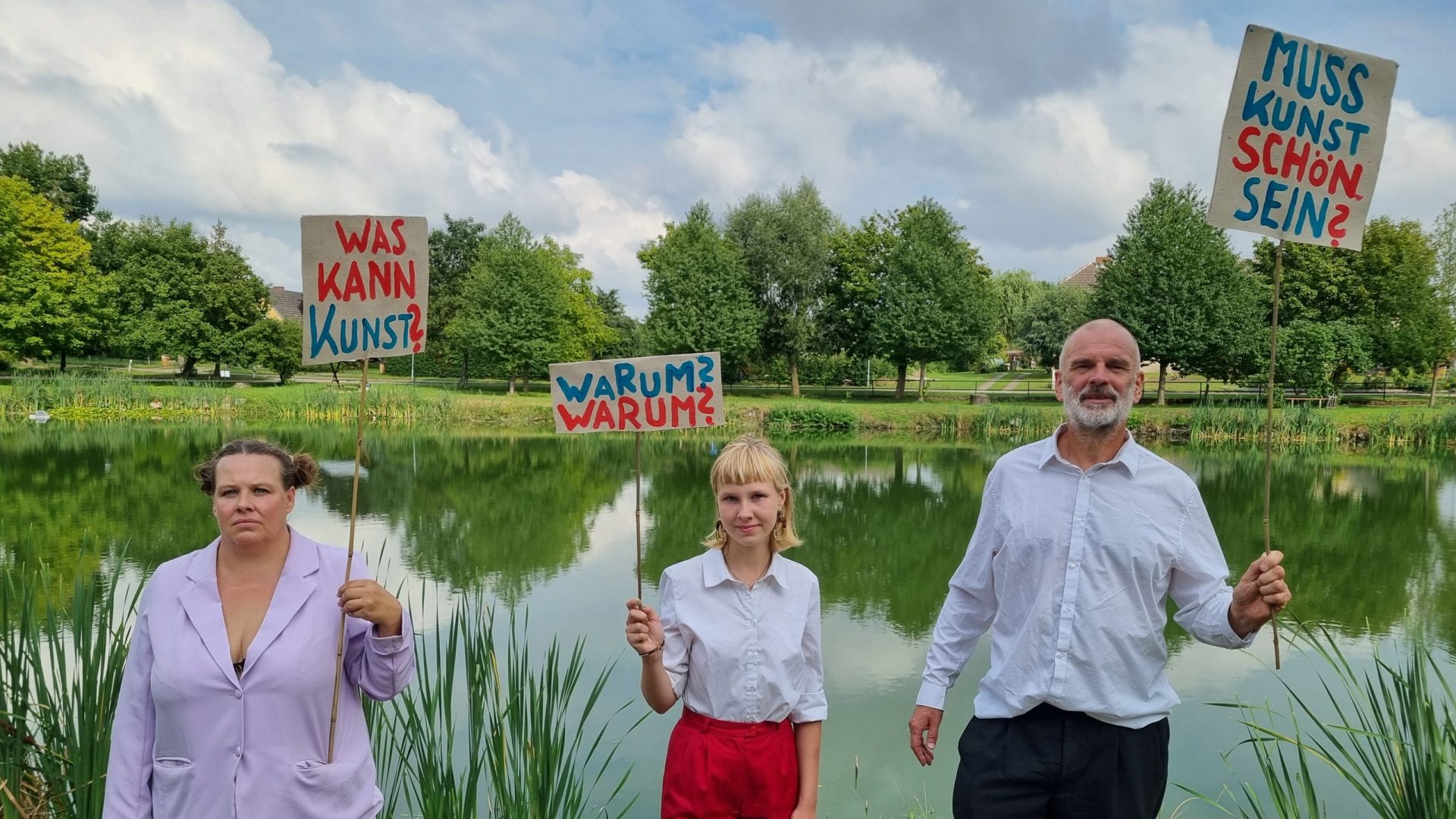This article describes the background and history of our performative work with teaching and learning. Current events in our Teach Each Other knowledge sharing series are announced on the front page of this site, and on our Facebook page.
How do we learn to perform in art and life? This is one of the central issues we think about, as artists, organisers of art, and as a couple, where learning to understand each other across cultures, languages and classes is vital to make our relationship work, and as a family, witnessing how our 3 and 14 year old daughters learn to be human beings, mostly stumbling upon new knowledge or making it up as they go along.
Teaching and learning in the arts, in schools and in society in general, are still mostly organised around authoritarian hierarchies, with information flowing in one direction only, from teacher to student. We receive much of our inspiration from informal learning situations we experienced in performance art. Pre-academia, making performances was mostly learned by observation, discussion, trial and error. Each performance artist would develop their own practice, often re-focussing a practice in a different field, artistic or otherwise. Almost any experience can be useful in making performances, but none are absolutely necessary. This sets performance art apart from, for example, learning to play the violin or to repair cars. What makes a particular action a performance is mostly the framing, the fact that someone says it is. This is far from trivial. Framing something as art is an efficient device to look at it in a new way, as we learned from Marcel Duchamp (or the woman he stole the urinal idea from).
If making performance art does not require any specific technical skills, we have to conclude that everyone can make it. The only prerequisite seems to be that they have to make the decision to call what they do performance art. To do this, all they have to know is that performance art exists, and that they are allowed to call their work performance art. Maybe we should try to see performance art as a strategy to open experiences for examination by others, rather than a genre of art. Someone might decide to call the act of painting a picture their performance, someone might invite some people to a tea party and call that a performance. Or someone might make a performance by talking about their family history.
We believe that everyone has experiences worth sharing, whether they might be called performance art (yet) or not. Our Teach Each Other platforms aim to give space to hear the voices of all present. We are aware that everyone present at a rather esoteric art event does not equal everyone, but it is a start. We pursue opportunities to test the ideas we develop outside the art world.

History
Some of the ideas we play with in this area reach a long way back into Jörn’s practice as an artist-organiser of performance art. From roughly 2003 to 2013, he organised meetings for performance artists in Berlin with different partners. The events had different formats and ran under the title of Performer Stammtisch. Once every month, they would present the works of one or more performance artists, and talk about it afterwards. There would also be a bar, and time to socialise and informally swap information. In the beginning most of the people presenting were based in Berlin, knew each other, followed their work and would attend regularly. After the format became better known, performers from around the world started to drop by. After some years of doing this, Jörn realised that by running Performer Stammtisch, he was actually organising his own education as a performance artist. We still consider performing, watching performances and talking about both the best way to become a performance artist.
Stammtisch inspired several other formats over the years, among them Live Art Danmarks Samtalekøkken, and the Fluid Academy at BONE festival in Bern 2015. Finnish performer and director Janne Saarakkala joined in and in return invited Jörn to guest edit an issue of the Finnish online magazine Ice Hole about the experience together with him. In it, there is a text by Jörn about Teaching and Learning performance art.

The most direct precursor of the present Teach Each Other formats was a workshop Jörn was invited to teach in 2015 as part of the Experiencias de la Carne festival at El Galpon Espacio in Lima/Peru. Like in similar situations before, he found it difficult to choose anything to teach the participants of the workshop, because many of them were experienced performance artists with their own practices. So he decided to turn the tables, and asked the participants of the workshop to each find a small sequence to teach each other. To make the exercise accessible to all participants, experienced in performing and teaching or not, they got to choose the duration of their teaching session, which could be very short, and the content, which could be performance art related or not. It was interesting to see how the supposedly ‘non-artisitc’ contributions, which included singing songs or playing children’s games, began to look a lot like performance art works in the frame of the workshop.
Now and Next
Based on these experiences, we continue to experiment with non-hierarchical teaching and learning experiences. Images and short texts about three of our common projects can be found elsewhere on this website: The Workshop Rules and Games at Hochschule der Künste in Berne, the Teaching Each Other Lab with Jorge Tadeo Baldéon from Peru in Copenhagen, and our present series of morning trainings, the Teach Each Other Mondays.
